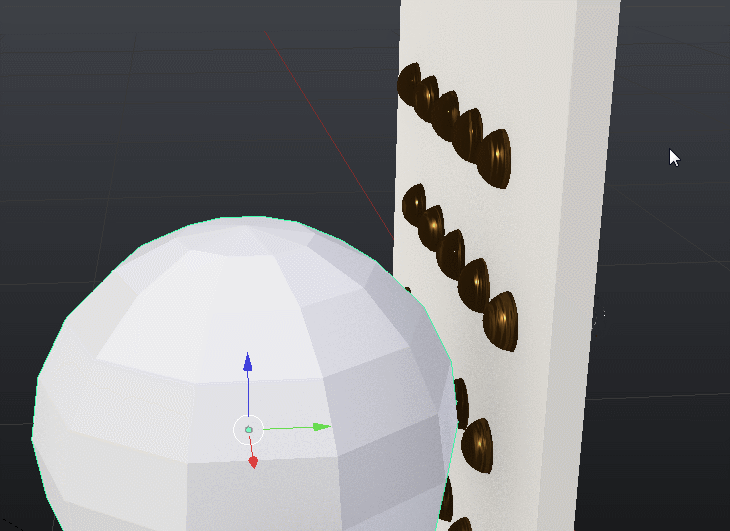So I am creating an animation that will show an invisible force (such as a thumb) pushing down on the gold contacts to show that they are set on a spring. I need the gold contact to be slightly pushed in as the force is moving over it. The springs do not need to compress but I think it will add to the realism of the animation. So if this can easily be done I would like to add that feature as well.
I have tried force fields and magnetic field, that didn't seem to do anything (probably using it wrong).
I am not even sure the path I should go down, Do I set the gold contacts as rigid body and get a force field to move them or is it better done as a weight proximity modifier? I just don't know what my next step should be.
Just to clarify:
In the below GIF, imagine the sphere is invisible but everywhere it touches the gold contacts it should slightly push them in, causing the springs to compress. And they should pop back to their original position once the force passes it.















